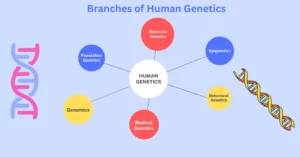AI Answer Evaluation Platform Live Now. Try Free Answer Evaluation Now
Great Tradition and Little Tradition
The complex fabric of human societies and cultures can be better understood through the dual concepts of “Great Tradition” and “Little Tradition”, first introduced by Robert Redfield in his studies of Indian society in the mid-20th century [1].

Great Tradition and Little Tradition: Definitions and Differences
Great Tradition
The Great Tradition pertains to the formal, official, or classical culture predominantly associated with the educated and elite classes of society. It is typically expressed in formal institutions such as the legal, educational, religious, and political systems [1].
Key characteristics include:
- Primarily textual and written
- Tends to be standardized and homogenous
- Usually associated with urban and literate societies
- Emphasizes formal institutions, religion, philosophy, and the arts
Little Tradition
Conversely, the Little Tradition refers to the local, regional, and primarily oral traditions of the masses, typically in rural settings. This encompasses the day-to-day practices, folklore, myths, and rituals that are often overshadowed by the Great Tradition [2].
Key features involve:
- Oral and primarily non-textual
- Diverse and heterogeneous
- Mostly found in rural, less literate societies
- Encompasses folk culture, local rituals, customs, and superstitions
| Aspect | Great Tradition | Little Tradition |
|---|---|---|
| Medium | Textual/Written | Oral/Non-textual |
| Homogeneity | Standardized | Diverse |
| Society | Urban/Literate | Rural/Less literate |
| Content | Institutions, Religion, Philosophy, Arts | Folk culture, Local rituals, Customs, Superstitions |
Interplay of Great Tradition and Little Tradition
While these traditions appear to exist in parallel, they continually interact, influence, and shape one another. One commonly seen process is “Sanskritization”, where elements of the Little Tradition are incorporated into the Great Tradition, leading to a rise in social status [3].
Another process is “Parochialization” where elements of the Great Tradition trickle down and get localized or “folklorized” in the Little Tradition [4].
The Significance in Anthropological Discourse
Understanding the Great Tradition and Little Tradition is crucial in anthropology for several reasons:
- Cultural Complexity: These concepts shed light on the cultural complexity within societies, revealing how different groups interpret and practice shared cultural elements.
- Social Dynamics: They highlight the dynamic and reciprocal relationship between different socio-economic classes within societies.
- Historical Continuity: They provide insight into cultural change and continuity over time, and how societies absorb, adapt, and reshape both internal and external influences.
Conclusion
The Great Tradition and Little Tradition constructs provide a lens through which anthropologists can unravel the complex dynamics of human societies. This duality continues to play a vital role in understanding culture, society, and the ceaseless flow of human history.
References
[1] Redfield, R. (1956). Peasant society and culture: An anthropological approach to civilization.
[2] Singer, M. (1972). When a Great Tradition Modernizes: An Anthropological Approach to Indian Civilization.
[3] Srinivas, M. N. (1956). A note on Sanskritization and Westernization.
[4] Marriott, M. (1955). Little Communities in an Indigenous Civilization.




